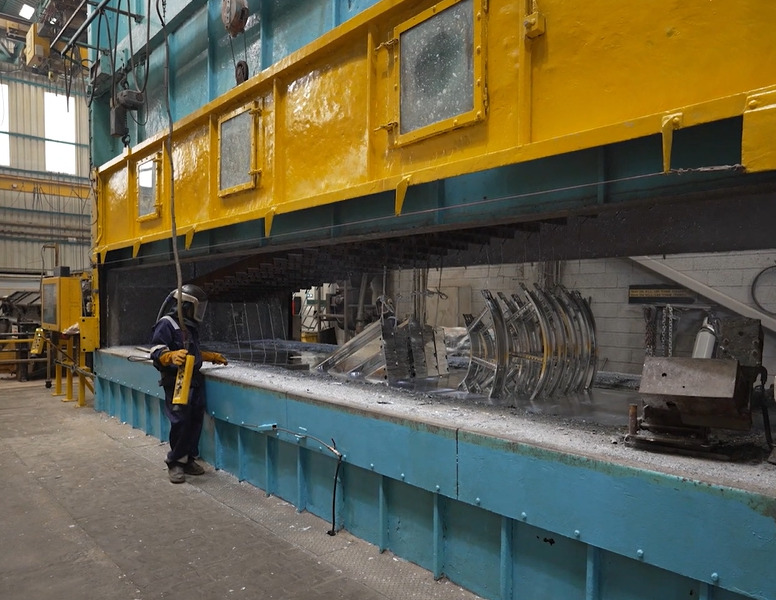We’ve been hot dip galvanising steel for over 20 years at Widnes, honing our craft and perfecting our skills. What we don’t know about galvanising isn’t worth knowing!
We galvanise all sorts of fabrications across a wide range of industries. Our galvanising service provides low maintenance corrosion protection for many decades.
Talk to our team today for an excellent finish that adheres to BS EN ISO 1461 specifications. (View our Quality Policy.)

We explain the galvanising process below.
We inspect the work for galvanising suitability. Contaminated surfaces through paint, grease, sand etc. and wrongly positioned or missing holes are communicated to customers.
After inspection, we wire the steel onto jigs and transfer it to our pickling tanks, submerging it in hydrochloric acid to remove all rust and mill scale to create a chemically clean surface. Hot dip galvanising occurs only when the material’s surface has been cleaned. If any contaminants are left on the steel, it will not galvanise fully. (See ‘Surface preparation’ notes below.)
The jigs are immersed in rinse water to clean off the acid.
This is the final step before the steel reaches the galvanising bath. The steel is placed in the flux tank to clean any remaining oxides, allowing the zinc to wet the steel.
The steel is left to dry in the enclosure around the galvanising bath. Once dried sufficiently, it is dipped in a molten zinc bath heated to approximately 450°c. This is when the reaction between the steel and the zinc takes place. The amount of time steel is left immersed in the bath depends on the fabrication and thickness.

Once hot dip galvanising has taken place, the zinc is metallurgically bonded to the steel substrate producing a protective coating. At this point, the steel has been protected from corrosion, and it is ready for the end user.
Once the steel has cooled sufficiently, we cut it down and inspect it to ensure it meets the British Standard of BS EN ISO:1461. Finally, it is weighed and ready for dispatch.
Pickling steel in hydrochloric acid removes surface rust and mill scale, but it will not remove the surface contaminants listed below. If steelwork is sent to us for processing and any contaminants are present, it will result in a poor-quality finish and may increase the turnaround time. Therefore, any of the below contaminants should be removed before work is sent in.
Previously galvanised steel can be stripped off in our process but carries a higher cost than galvanising on clean steel.
Next page
To protect any parts of the steel that need to be drilled or cut after galvanization, spray them with Galvsafe – a unique galvanizing zinc repair spray developed by Joseph Ash Galvanizing.